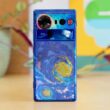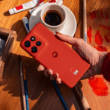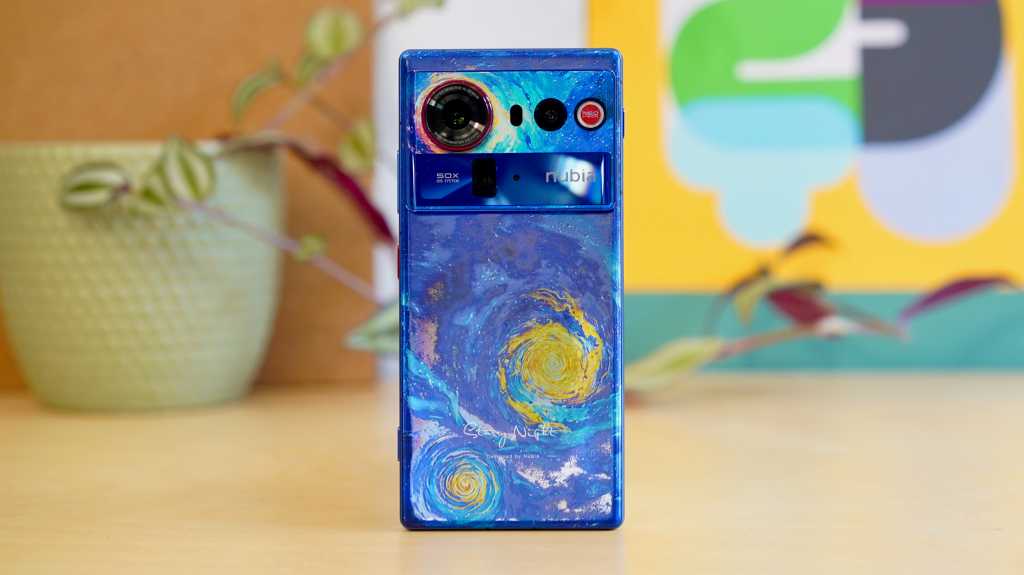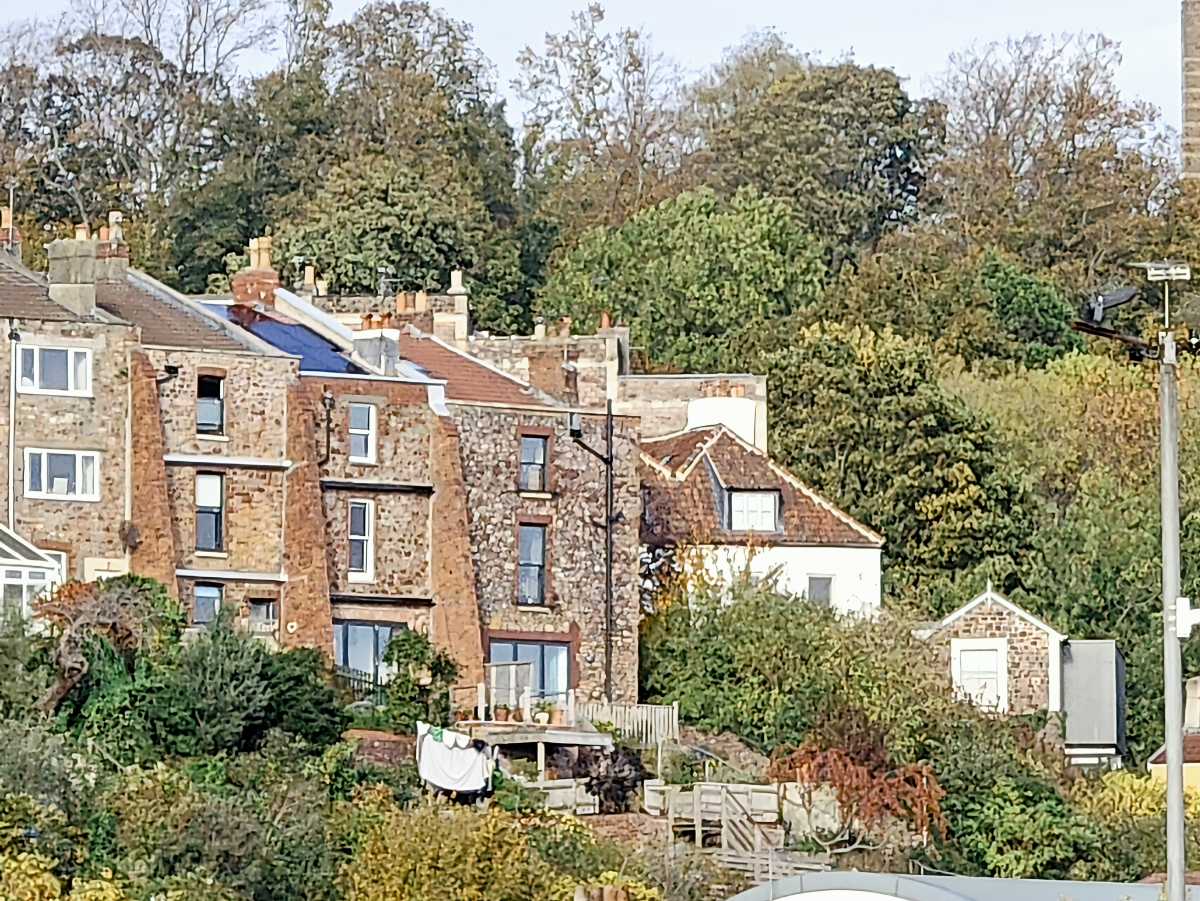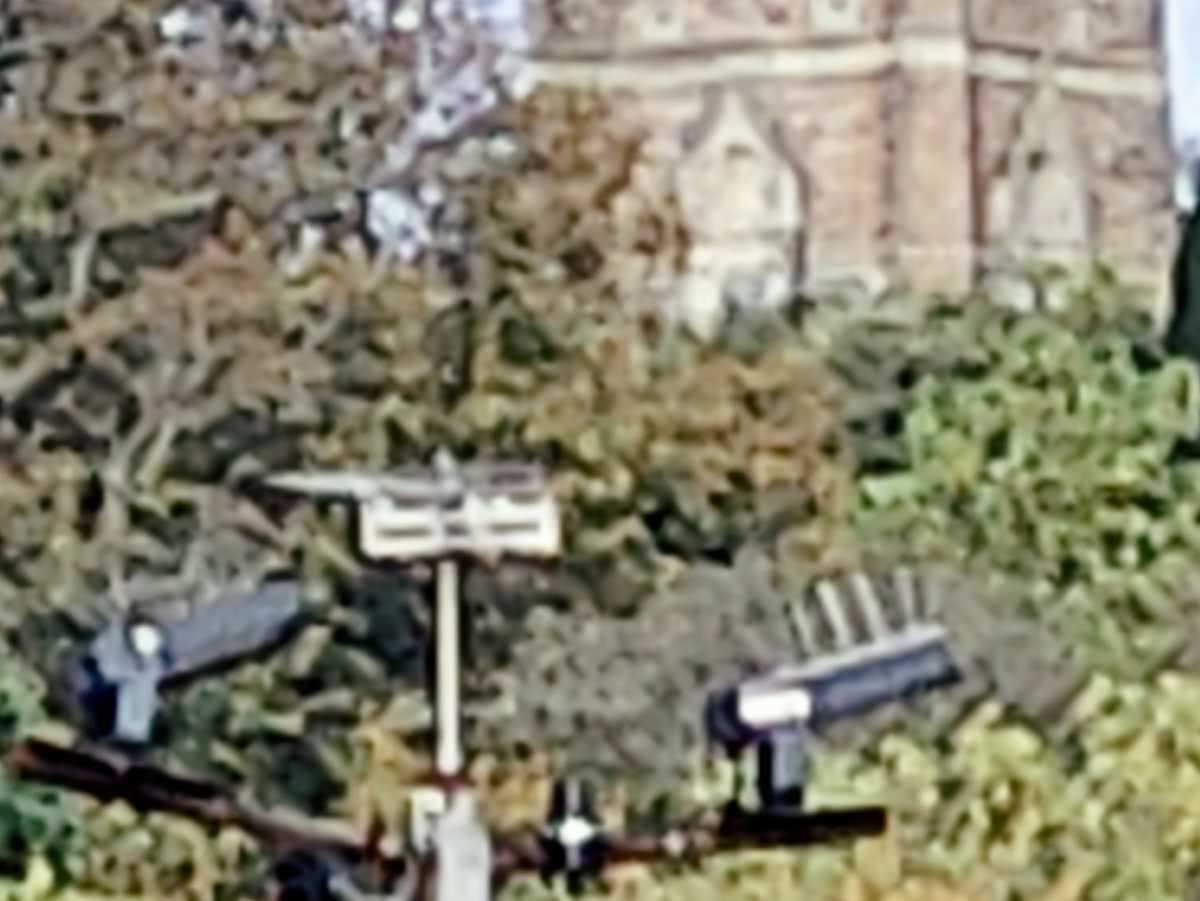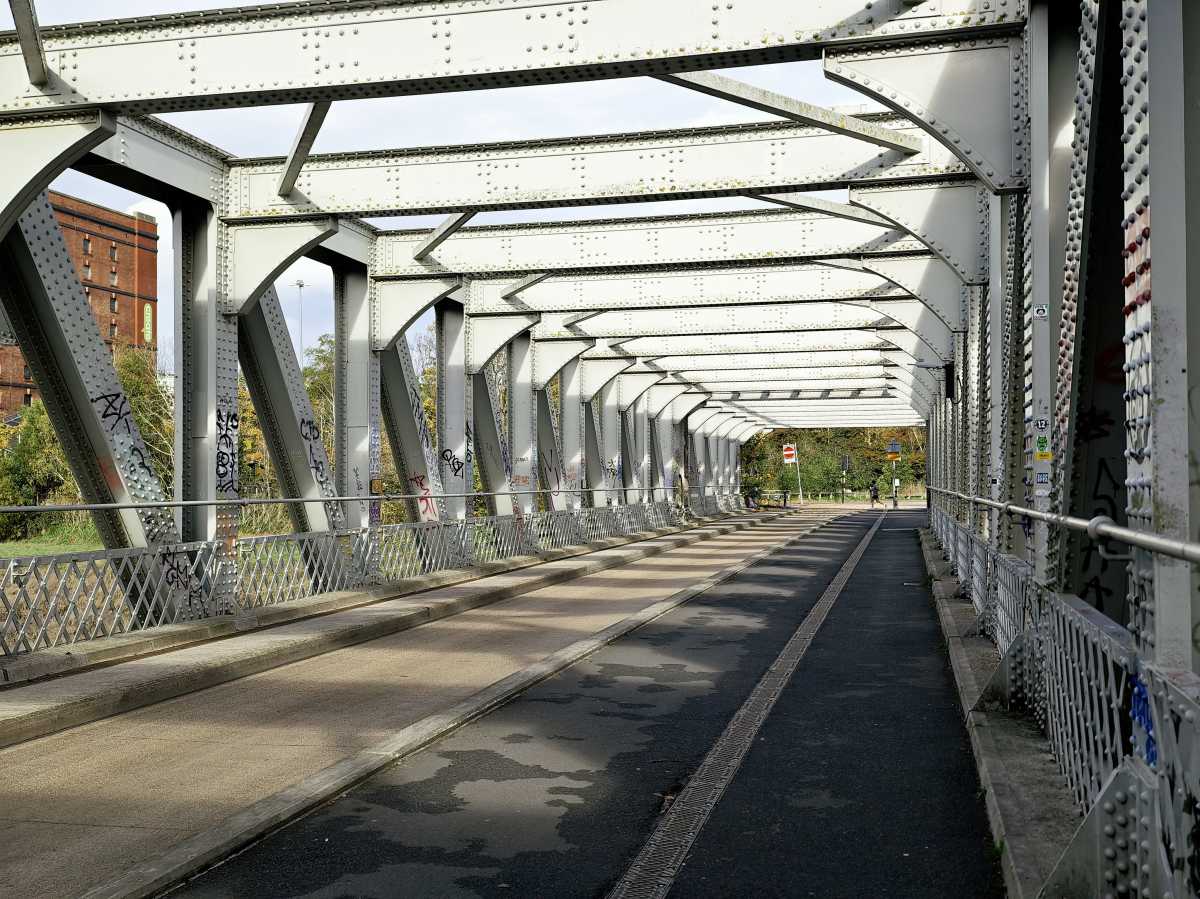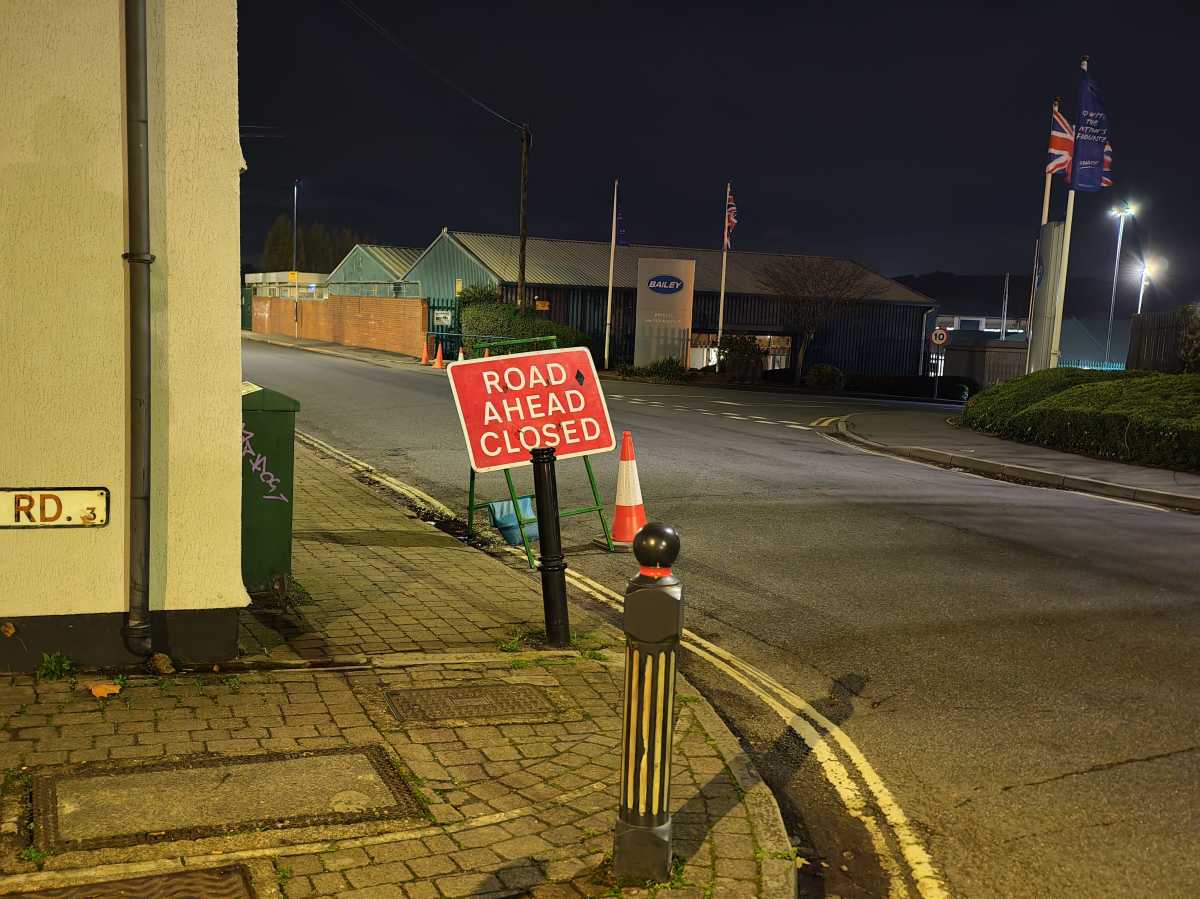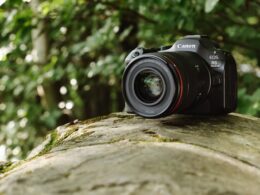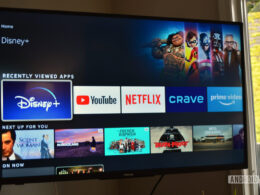At a glance
Expert’s Rating
Pros
- Blistering performance
- Epic battery life
- Excellent, full-screen display
- Wireless charging, finally
Cons
- Bulky, clumsy design
- Woeful selfies
- Poor software with limited support
Our Verdict
Nubia has further improved its mixture of flagship specs and mid-range pricing. The Z80 Ultra is as fast as they come, with a huge battery and wireless charging, though it still needs could still use some hardware and software refinement to become the best in class.
Price When Reviewed
This value will show the geolocated pricing text for product undefined
Best Pricing Today
Best Prices Today: Nubia Z80 Ultra
With the Nubia Z80 Ultra, one of the smaller Chinese smartphone brands sets out to refine its enticing flagship killer blueprint.
The Nubia Z70 Ultra (and its pointless revision, the Nubia Z70S Ultra) both presented as all-singing ‘Ultra’ phones, but made some smart concessions to hit a price of around half a Samsung Galaxy S25 Ultra.
In this next-gen update, the design is a little softer, the performance marks a step up (offering an early glimpse at the Snapdragon 8 Elite Gen 5 in action), and the battery is even bigger. We even get wireless charging this time around.
Does that sound like enough of an upgrade to you? With a lower starting price of £579, it just might. Further refinements are required, but the Nubia Z80 Ultra offers a lot to admire.
Design & Build
- Big and heavy
- IP68/IP69 certified
- More curvaceous than before
- Starry Night edition certainly makes an impression
While every other Android manufacturer is trying to make their phones look like an iPhone, Nubia shoots for a retro camera aesthetic.
Points for originality, then. In the hands, however, Nubia’s design work has never been my favourite. The same is true of the Z80 Ultra, which broadly sticks to the look of the Z70 Ultra before it.
It’s slightly softer and rounder, with a hint of curvature to the aluminium frame and to the edges of the rear cover glass. The camera module, too, is less of a crude slab than before, with a smaller surface area and a taper to the left and right sides.

Jon Mundy / Foundry
Even so, this remains a very big phone. It’s 8.6mm and 227g, which is even thicker and heavier than the Samsung Galaxy S25 Ultra.
The Z80 Ultra doesn’t quite feel quite premium enough to sell the vintage camera look, though build quality is clearly of a decent standard. The provision of both IP68 and IP69 certification ensures a better-than-usual level of water resistance.
The finishes come in Black, White, or Blue. The latter, which my test model comes in, is a special edition ‘Starry Night Edition’, riffing on the famous painting from Vincent Van Gogh.

Jon Mundy / Foundry
Personally, I found the painterly swirls and the lacquered, shimmery effect to be ever so slightly tacky. But as someone who can often be found complaining about how boring modern phones look – and who loves that Apple gave us a bright orange option for the iPhone 17 Pro – I feel it would be churlish to complain too much here.
Like the previous models, Nubia has gone above and beyond with its physical controls. As well as the usual volume and power buttons, there’s a slider switch on the left edge that – praise be – now moves between sound modes by default rather than jumping into the camera app.
The Z80 Ultra doesn’t quite feel quite premium enough to sell the vintage camera look, though build quality is clearly of a decent standard
For the latter, there’s a two-stage camera shutter button that falls neatly under your right forefinger. It’s sprung just right, too, so you can reliably half-press to lock focus, then press all the way to take a snap.
Screen & Speakers
- 6.85-inch 1.5K AMOLED display
- 144Hz refresh rate
- So-so stereo speakers
After Nubia upgraded its display for the Nubia Z70 Ultra, it’s perhaps no surprise to see the Nubia Z80 Ultra holding position. It uses what appears to be the same 6.85-inch BOE AMOLED panel.
This packs a sharp 1216 x 2688 (often referred to as 1.5K) resolution, and a higher-than-usual 144Hz refresh rate. The latter is really only useful in a relatively small selection of games that have been designed to output at elevated frame rates, but at least the Z80 Ultra has the processing power to back it up – more on that later.
Elsewhere, a peak brightness of 2000 nits falls well short of true flagships, but provides ample outdoors brightness nonetheless.
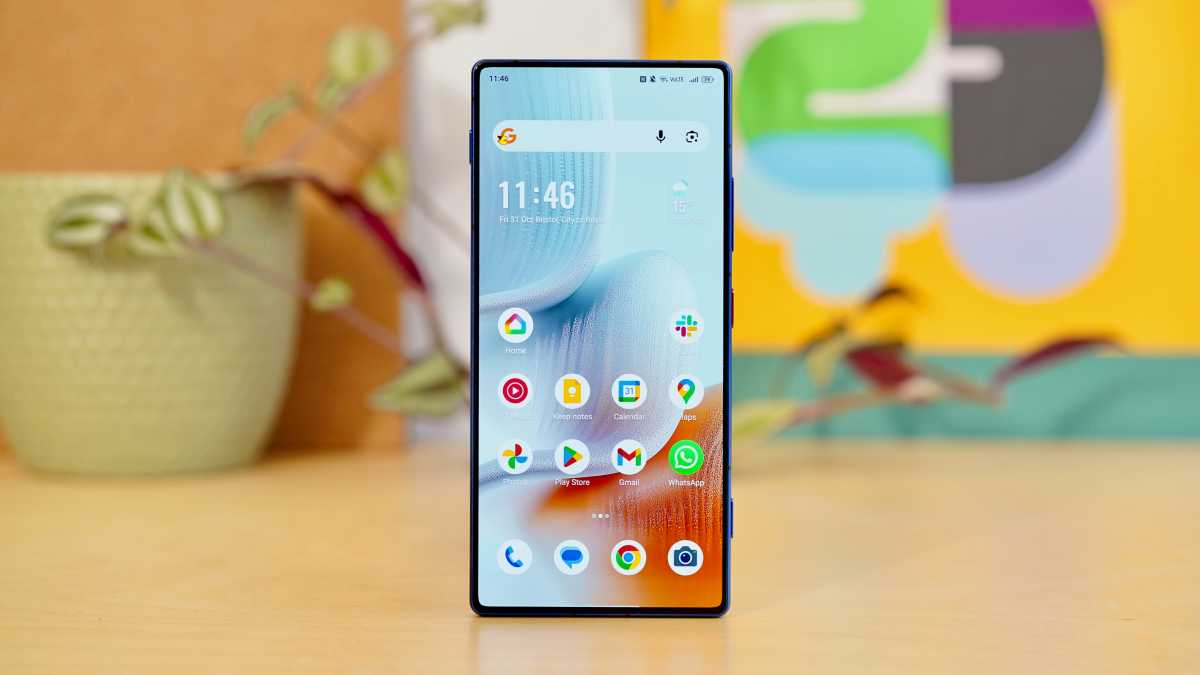
Jon Mundy / Foundry
Like the RedMagic 11 Pro – a £600 gaming phone also made by Nubia – the Z80 Ultra display stashes its selfie camera under its display. This has negative repercussions for selfies, but in display terms, at least it’s a notable positive.
Video and gaming content is allowed to stretch out with no bothersome notch getting in the way.
The audio provision isn’t quite as convincing. Stereo speakers flank that large display, but the output is somewhat lacking in low-end heft. Boost the volume up to higher levels, and the effect is quite grating, even if the audio remains sufficiently clear.
Specs & Performance
- Powered by Snapdragon 8 Elite Gen 5
- Up to 24GB RAM and 1TB storage
- Class-leading performance
One of the ways in which Nubia – still a relatively minor player on the smartphone scene – cleverly attracts attention with its flagship phones is by making them among the first to feature Qualcomm’s latest high-end System on Chip (SoC).
That’s as true of the Nubia Z80 Ultra as it was of the Z70 Ultra and the Z60 Ultra. This time around, it’s the turn of the Snapdragon 8 Elite Gen 5 – an elaborately named chip that supplies an almighty, iPhone-rivalling level of CPU and GPU performance.
It also runs up to 24GB of LPDDR5X RAM. My test model is the mid-tier 16GB variant, while even the entry-level 12GB model should prove ample.
Running through our usual suite of benchmark tests, the Nubia Z80 Ultra impresses. It’s significantly faster than the Redmagic 10S Pro and the OnePlus 13, with single-core CPU performance that matches the iPhone 17 Pro, and multi-core performance that blasts past it.

Jon Mundy / Foundry
When it comes to the GPU, our GFXBench tests don’t reveal too much. The phone is topping out at 60fps, just like the Nubia Z70 Ultra, but is quite clearly capable of more. It seems to be a quirk of the way Nubia’s phones interact with the app, and the brand isn’t unique in displaying such behaviour.
More revealingly, I ran the phone through 3DMark’s sustained performance tests, which involve 20 consecutive minute-long intensive GPU workouts. The Nubia Z80 Ultra performed well, with a Solar Bar Extreme Stress Test stability score (representing the distance between the best and lowest loop scores) of 70.9%. That’s around 10% short of the Redmagic 11 Pro with its monstrous cooling system, but is pretty good for a ‘normal’ phone.
The Z80 Ultra runs Destiny: Rising fluidly on Max frame rate (90fps) and Ultra rendering quality, which is as good as any phone right now
It falls behind the iPhone 17 Pro in terms of individual loop results, but beats it by 10% in terms of stability. And yes, the phone was uncomfortably hot after running the aforementioned heavy workload – far hotter than Apple’s latest flagship phone with its own improved thermals.
What this really means is that the phone can run at a decent lick over extended periods. In gaming terms, the Z80 Ultra runs Destiny: Rising fluidly on Max frame rate (90fps) and Ultra rendering quality, which is as good as any phone right now (including the iPhone 17 Pro).
Nubia Z80 Ultra benchmarks
Cameras
- 50Mp main camera
- 64Mp 3.3x telephoto
- 50Mp ultra-wide
- Poor 16Mp in-display front camera
Rather curiously, Nubia made its major changes to the Z70 Ultra camera with the Nubia Z70S Ultra – a nominally half-generational update. That leaves the Nubia Z80 Ultra with little, if anything, to offer in terms of fresh features.
This means that it runs a 50Mp 1/1.3-inch Light & Shadow Master 990 main sensor, which is larger than the 1/1.56-inch sensor of the Z70 Ultra. Again, we’ve seen this before.
What you don’t get is the Z70 Ultra’s splashy variable aperture. It’s not a huge loss, to be fair, as the Nubia Z80 Ultra can take shots with superior depth and detail. It can struggle with overexposure, though.
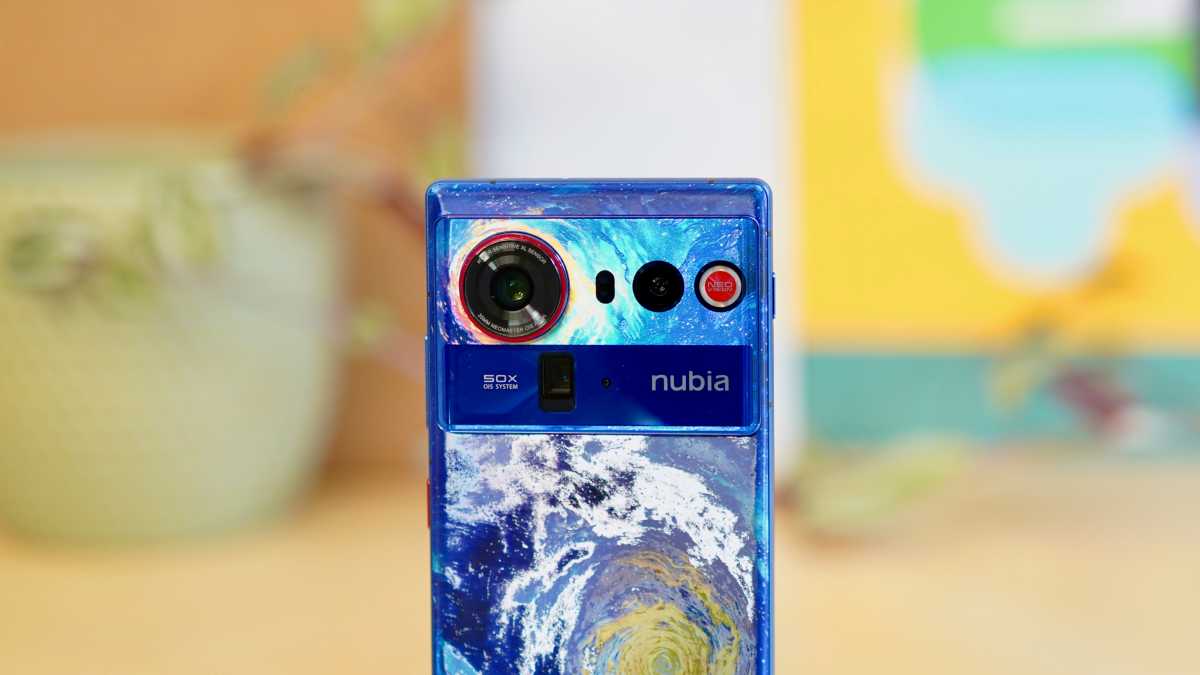
Jon Mundy / Foundry
Nubia adopts the photographic enthusiast language of focal lengths over the more commonly stated zoom levels – so it’s 35mm and 18mm rather than 1x and ultra-wide – but the camera system itself remains a little hit and miss.
There’s a fairly consistent tone between the three cameras (a 64Mp telephoto and a 50Mp ultra-wide fill out the offering) this time around, at least. You’ll find a clear uptick in graininess with the ultra-wide camera, but it seems as if Nubia has done some work matching its temperature up to the main sensor.
The drop off in quality in zoomed shots beyond 85mm, meanwhile, is quite pronounced. Nubia doesn’t make it particularly intuitive to zoom in further, which is probably a good thing.
Night mode kicks in automatically and captures clear and balanced low-light snaps. There’s a slight level of artificiality to the level of brightening, but I was generally pleased with the results.
The camera system itself remains a little hit and miss
The biggest weakness here is the 16Mp selfie camera. In placing it below the display, Nubia has basically condemned its phone to being a write-off for anyone who takes a lot of selfies. It really is that bad, with smudgey, low-detail shots that have had so much processing thrown at them, they appear to have had a bad retro filter applied to them.
I’m still not a fan of Nubia’s camera UI. Besides the somewhat pretentious use of focal lengths – with the odd confusion use of 10x thrown into the mix – we have a largely pointless Street photography mode in addition to the regular Photo and Pro ones.
Then there’s the irritating application of a watermark out of the box, as well as beautifying effects that give facial features an eerily fake glow.
It’s another camera set-up that, while quite effective in certain instances, isn’t consistent or impressive enough to warrant the pro photographer posturing.
Battery Life & Charging
- 7200mAh battery
- 80W wired charging
- Wireless charging finally added
- No charger in the box
Perhaps the most improved element of the whole Nubia Z80 Ultra package is its battery and charging provision. It feels churlish to point out that its predecessors were hardly lacking in these departments.
It’s undeniably impressive to see an even bigger 7200mAh battery installed in the phone, though. This isn’t merely a phone that can limp to two days if your usage is light – it’ll make bedtime on the second day with relative ease.
On one particular day of lighter-than-ordinary usage, on a stable Wi-Fi network and with around two hours and 30 minutes of screen time, I was still left with 90% in the tank. That’s extraordinary, and means that you could probably start to consider a third day of usage if you’re not a heavy user.
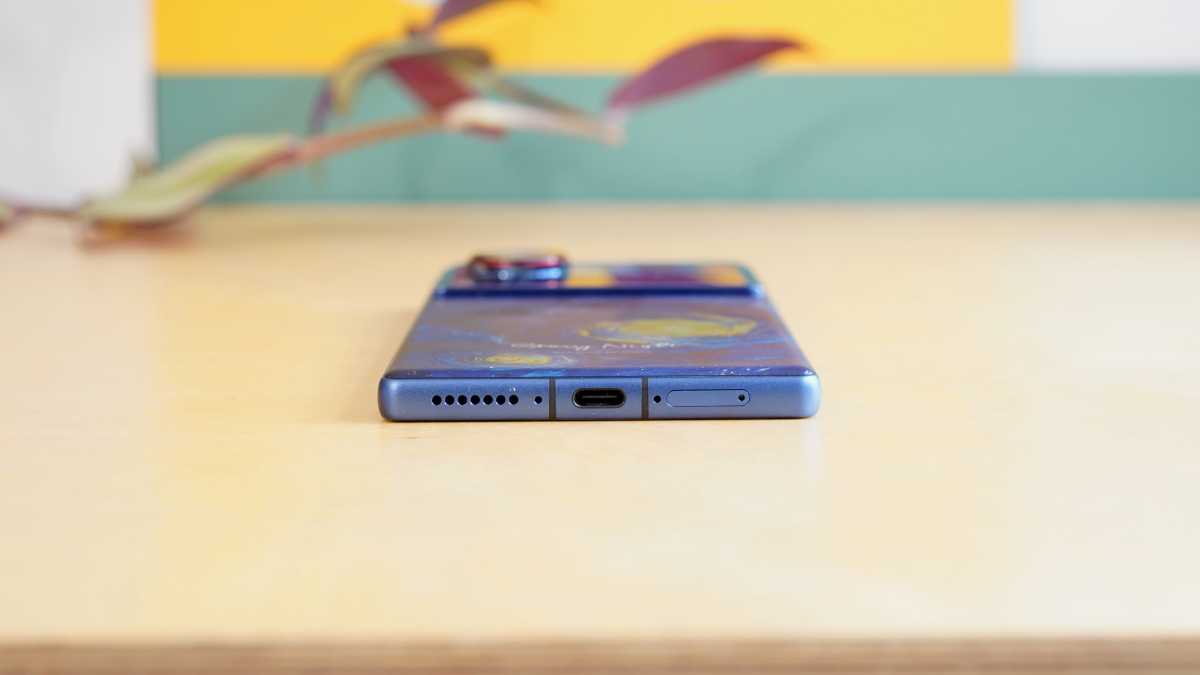
Jon Mundy / Foundry
When you do hit the phone with more intensive media usage, however, the Z80 Ultra continues to underperform. While a PCMark Work 3.0 battery test score of 10 hours and 11 minutes is a full hour longer than the Nubia Z70S Ultra managed, it still falls four hours and 40 minutes short of the Asus ROG Phone 9 Pro, and more than 9 hours shy of the Samsung Galaxy S25 Ultra.
80W wired charging support remains, and is good enough to get you from empty to 64% in 30 minutes, and on to 100% in a little under an hour – provided you activate the Turbo charging mode in the Settings menu.
This isn’t merely a phone that can limp to two days if your usage is light – it’ll make bedtime on the second day with relative ease
It’s also required that you provide a compatible charger. Unfortunately, Nubia stopped supplying such an accessory in the box with the Z70S Ultra. Thankfully, I still had the Z70 Ultra charger to hand, but I also tried using one of Xiaomi’s 120W chargers, and it proved much slower.
Arguably bigger news than the expanded battery is the fact that Nubia has finally given in and added wireless charging to the package – and at up to 80W wireless, too, if you have the necessary charging kit. No, it’s not Qi2, but one step at a time.
Software & AI
- Android 16 with Nebula AIOS 2.0
- Google Discover feed is gone again
- Limited AI tools
- Only 3 years of support promised
Nubia’s Nebula AIOS is back in its second full iteration, where it sits on top of Android 16.
It hasn’t developed much from the first version, which is a shame. This is arguably the area to which I would have liked to have seen the most attention paid.
Or should that be the least attention? This is the sort of overly fussy, congested custom Android UI that just makes me wish the manufacturer had offered the ability to opt out of any embellishments and just give us a pure Android experience. If Asus can do it, why can’t everyone else?
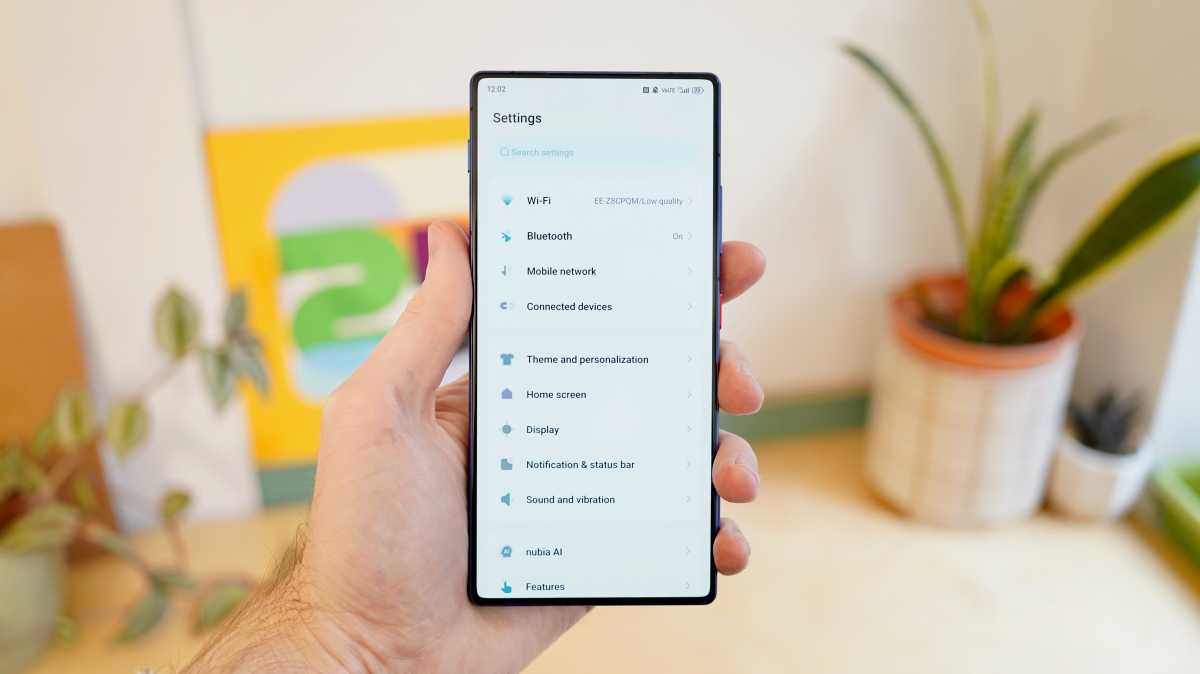
Jon Mundy / Foundry
On the positive side, navigation is fast and smooth, and the settings menus haven’t been messed around with too much. It’s reasonably intuitive to live with, and bloatware is conspicuous by its (relative) absence.
Unfortunately, Nubia appears to have rolled back from Nebula AIOS 1.5, and has reinstated its terrible Z-board screen to the left of the Home Screen. Instead of the usual Google Discover feed, you once again get a horrible selection of recommended apps and games on top of a trashy news widget.
This is the sort of overly fussy, congested custom Android UI that just makes me wish the manufacturer had offered the ability to opt out of any embellishments and just give us a pure Android experience
Once again, Nubia goes light on AI tools. It would be glib to try and paint this as a positive – whatever the state of today’s mobile AI provisions, we now come to expect them in key departments, and the Z80 Ultra falls short.

Jon Mundy / Foundry
Nubia AI gives you a live translation tool, AI-powered call transcriptions and translations, and the usual basic Google Gemini-driven tools. It’s pretty sparse.
In terms of software support, the situation isn’t great at all. Nubia promises a mere three years of security updates and just a single major Android upgrade, while “push optimisations will be made based on market demand.” That’s one of the weakest assurances that I’ve seen, especially for a phone that costs north of £500.
Price & Availability
It’s difficult to pin Nubia down with its pricing at times, but the figures it gave to us ahead of the Z80 Ultra’s launch point to a surprising price cut.
The claimed “Official Retail Price” for the model with 12GB of RAM and 256GB of internal storage is £579. That’s £70 cheaper than the starting price for the Nubia Z70 Ultra.
My own test model, which comes with 16GB of RAM and 512GB of storage, as well as that snazzy Starry Night finish, costs £729. Finally, the range-topping model with 24GB/1TB costs £799.
All models are available from the Nubia UK website, though there’s no word on US availability at this stage, despite the Z70 Ultra being available there.
That’s an extremely low UK price for a phone with this level of performance, and indeed this comprehensive a set of specifications. This is a phone with a (relatively) premium build, a dedicated telephoto camera, a flagship processor, and even wireless charging – all available for less than half the price of a Samsung Galaxy S25 Ultra.
Similarly-priced alternatives include the Xiaomi 15T (from £549) and Motorola Edge 60 Pro (from £599.99) – see more in our guide to the best mid-range phones.
Should you buy the Nubia Z80 Ultra?
Nubia has cranked up everything that made the Z70 Ultra so impressive, with class-leading performance and an ostensibly flagship-level spec list at an even cheaper mid-range price.
For anyone looking for the best performance possible in the sub-£600 category, there isn’t a phone to touch it at the time of writing. An enormous battery and impressive charging – now also in wireless form – help the Z80 Ultra to punch well above its weight.
Don’t think that you’re actually getting a true ‘Ultra’ experience, however. The design needs further refinement, while the camera system isn’t quite as pro-level as it initially seems to be, with variable quality and a clunky UI. The selfie camera is downright terrible, too.
Meanwhile, Nubia’s custom UI continues to require attention – or better yet, scrapping – in favour of a purer brand of Android.
But if you have your sights set on raw power at a bargain price, this could be your next phone.
Specs
- Android 16 with Nebula AIOS 2.0
- 6.85in, 1.5K, OLED, 144Hz, flat display
- In-display fingerprint sensor
- Qualcomm Snapdragon 8 Elite Gen 5
- 12GB LPDDR5X RAM
- 256GB storage
- 50Mp, f/1.7 main camera
- 50Mp, f/1.8 ultra-wide camera
- 64Mp, f/2.48 telephoto macro camera
- Up to 8K @ 30fps rear video
- 16Mp front-facing camera
- Stereo speakers
- Dual-SIM
- Wi-Fi 802.11 a/b/g/n/ac/ax/be
- Bluetooth 6.0
- 7200mAh battery
- 80W charging
- 164.5 x 77.2 x 8.6mm
- 227g
- Launch colours: Black, White, Blue
Link do Autor

